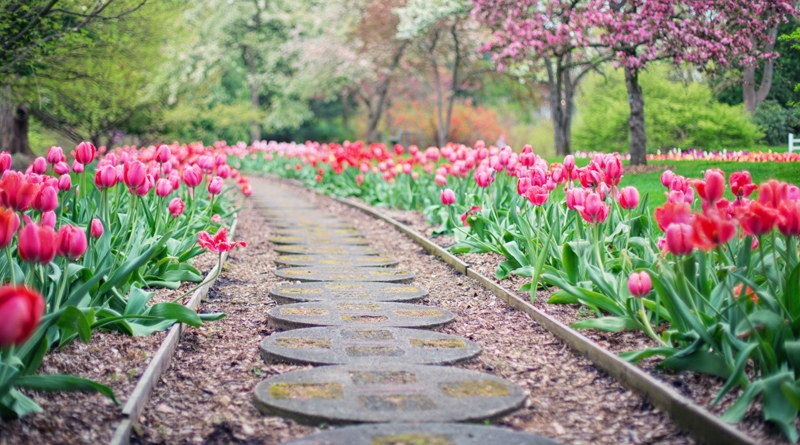4 HORTICULTURAL USES FOR NATURAL HOME-MADE WOOD CHIPS
It is universally agreed, by most outdoorsy types, that gardening is a fairly pleasant and relaxing activity. Despite the feeling of aching from head to toe after a long, hard summer slog, I have to concur that I simply would not be happy without the opportunity to work on my garden.
Just as important as my need to dig and dead-head, is my willingness to learn more about the techniques and natural resources I can implement in my garden. One brilliantly versatile material that I wish every budding gardener and green-fingered professional knew about, is the simple and accessible wood chip. However, it is a surprisingly under-utilized resource, so hopefully my following advice will boost its usage.
Making Mulch
My first piece of advice in utilizing wood chips is undoubtedly the most widely known horticultural use for the resource, but I believe that if you’re going to use them at all, then you need to know how and why you should turn your wood chips into mulch.
I use both broadleaf and conifer trees when producing my mulch. Preparing the wood chips at home is really doable with user-friendly and accessible machines like the Skarper C90 Pro. Compact enough to fit through the narrowest garden gates and pathways, you can chip 20 cubic metres of your unused branches per hour.
Once chipped, I make sure the wood matures for 3 to 4 months before use. Both types of wood produce a phytotoxic compound that is particularly harmful to newly-planted beds. Although it’s possible to introduce an immature broadleaf mulch to a well-established bed without causing any harm, I still leave it to age for several months beforehand, just to be safe. If you are thinking of using an unaged mulch, make sure not to use conifer wood chips as this will certainly have negative effects to even a well-established bed.
I’m always well-rewarded for my patience, however, as wood chip mulch is abundant in beneficial effects. As wood chips decompose very slowly, they are extremely long-lasting. So, once applied to flower beds, re-application shouldn’t be necessary for a long time. They also act as an exceptional protective layer, which moderates the condition of my soil through a process of moisture retention, followed by a slow release of water back into the ground. Wood chip mulch also provides, what is perhaps my favourite of all its benefits: a gloriously effective level of weed suppression.
My Favourite Garden Path
I have used wood chips to create a variety of paths and winding walkways amongst the flowers. After implementing the truly flexible resource in this way, I was shocked that I hadn’t thought to do it sooner. My walkways are soft, safe and incredibly easy to create.
As you may have guessed from what I’ve said previously, pulling weeds is not my favourite gardening pastime, especially when they sprout through the gaps in paving, but since switching to woodchip walkways – layered atop a weed barrier to increase longevity – I haven’t had to worry about a single weed invasion.
Plenty of Room for Mushrooms
When asked why I grow mushrooms, it’s hard to know what to say because there’s honestly a multitude of reasons: it’s fun, fascinating and ever since I started I feel as though I’ve learnt an awful lot and broadened my sense of taste, as well as my appreciation for nature. I doubt I would have taken up an interest in growing mushrooms had it not been for wood chips.
Perfect for the cultivation of mushrooms, it’ll take just a few simple steps to turn your wood chips into a beautiful mushroom patch. To begin with, I identify the type of fungi I would like to grow, and then acquire something imbued with the appropriate mushroom spores. Finally, I prepare a patch of pre-soaked wood chips in a shady area of my garden, and ‘plant’ my spores within it. Nature does the rest and it is magical to watch my assortment of mushrooms blossom into being. Not only is it a fun process, but it also holds the possibility of bioremediation – the cleansing of my gardens soil and water.
The Best Bit of My Garden
To those who aren’t chipping their own wood; I couldn’t recommend it more. It will provide you with unlimited access to an incredibly useful horticultural resource, not to mention the benefits of the logs themselves!
After finding myself with a surplus of deteriorating logs and wood chips, I decided to build what I consider to be the best addition to my garden: a hügelkultur. This remarkable horticultural technique was achieved by constructing a mound out of my decaying wood debris that I later planted as a raised bed. Other than being a remarkably beautiful talking point in my garden, the logs and wood chips within the hügelkultur take a long time to decompose; yielding a natural supply of nutrients to my plants over the coming years.

ABOUT THE AUTHOR
Jim Upson is the Director of Upson Mowers.
If you’re interested in creating your own wood chips with a compact and affordable chipper, visit: www.upsonmowers.co.uk/skarper-wood-chippers.html

